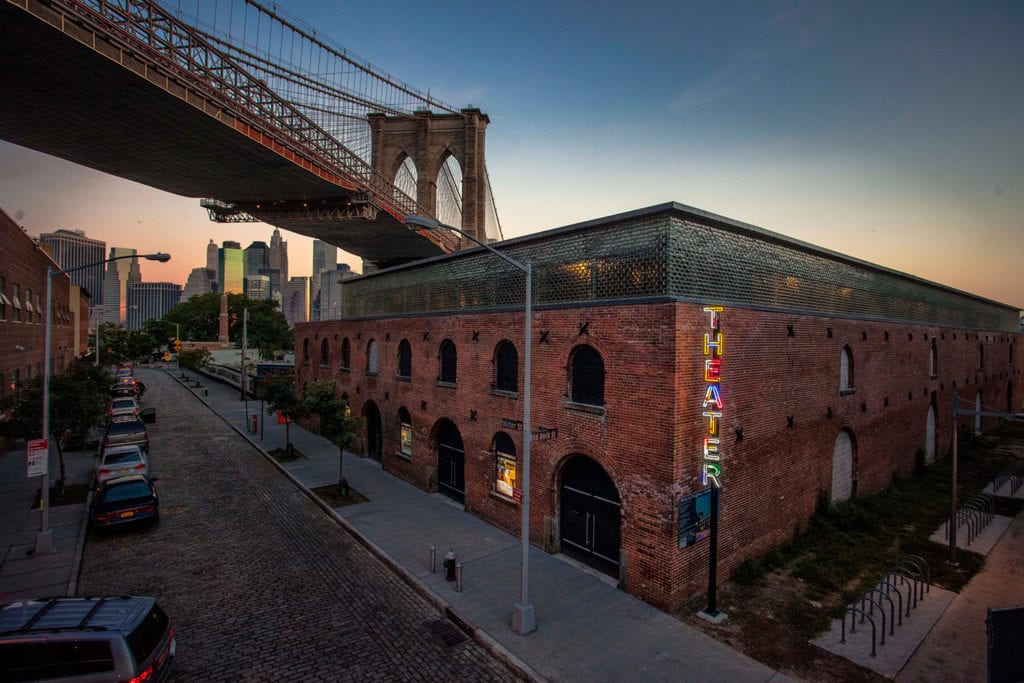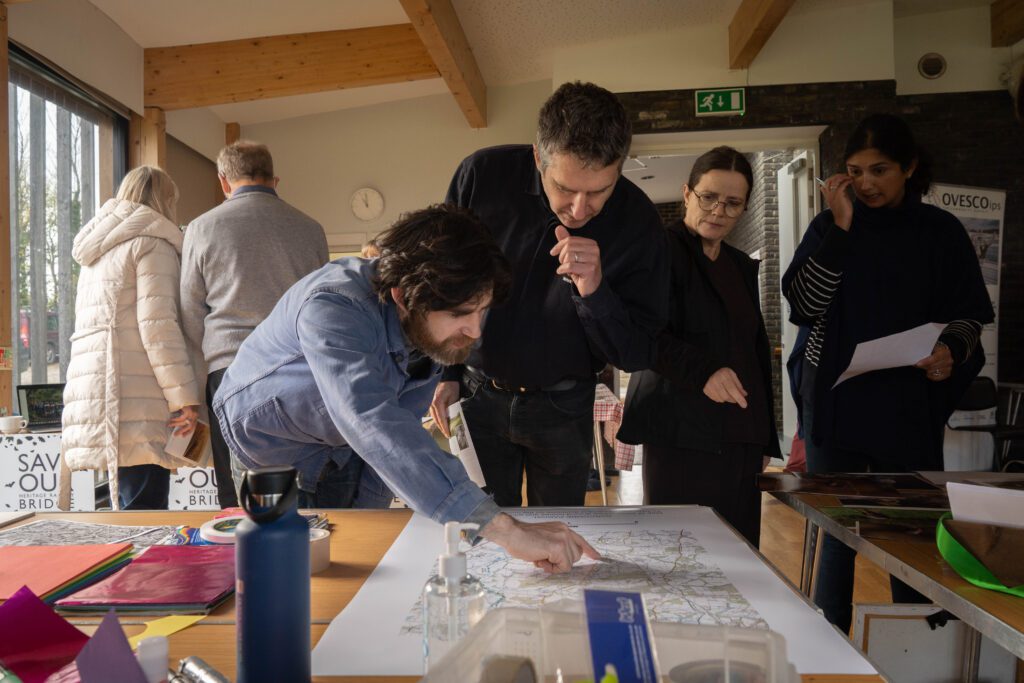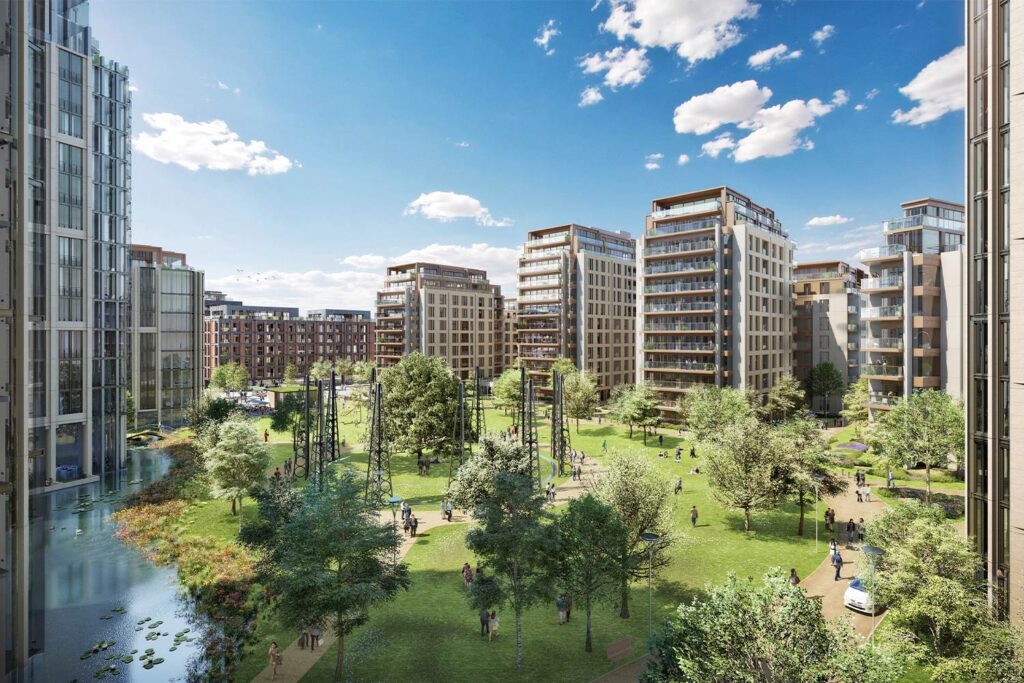Why and how are we assisting with decarbonization of the Empire State Building?
It is imperative that the built environment decarbonizes, and quickly. Building decarbonization is part of Buro Happold’s renewed focus to mitigate the effects of human-induced climate change and reduce the parts of our work that contribute to it.
Almost 40% of global greenhouse gas emissions are attributable to buildings and construction. Emissions reduction in the built environment is therefore critical to address the climate emergency.
Empire State Realty Trust (ESRT) and Buro Happold work together on efforts to reduce carbon emissions at the Empire State Building, to develop decarbonization pathways to achieve net-zero carbon across ESRT’s large portfolio of buildings by 2035, and to help define incentives to support low energy solutions that can be applied across New York City. This proactive action by ESRT, supported by Buro Happold, goes beyond legislative requirements and is part of the implementation of their roadmap – and ambition to visibly drive change at scale.
Buro Happold successfully supported ESRT to achieve $5m in funding through New York State Energy Research and Development Authority’s (NYSERDA) Empire Building Challenge, a state funded challenge to demonstrate different pathways toward carbon neutrality in tall buildings in the city. Funding will be used to implement low carbon retrofits at the Empire State Building, which will focus on central plant optimisations, energy recovery and heating electrification. As with all such projects within the built environment, consideration must be given to embodied carbon as well as operational carbon.
Astrid Sardiñas and Daniel Bersohn are associate MEP engineers in our New York office. We spoke to them to find out why the built environment must decarbonize, why New York City presents unique challenges and the actions taken to decarbonize the Empire State Building.

Why does the architecture, engineering and construction (AEC) industry need to decarbonize?
Astrid Sardiñas:
‘Decarbonization’ is a general term for the concept of carbon emissions reduction. Decarbonization of our entire society – from transportation, to agriculture, to the built environment – is necessary to meet international climate agreements and avert the most dangerous effects of global warming.
It’s important to decarbonize the built environment because buildings compose a significant portion of total carbon emissions. Construction and buildings contribute almost 40% of global greenhouse gas emissions. In New York City in particular, buildings are responsible for nearly 70% of emissions since we have so many buildings!
It’s important to decarbonize the built environment because buildings compose a significant portion of total carbon emissions.
Astrid Sardiñas, MEP Engineer
What are the differences in decarbonization considerations between a new building and retrofitting an existing one?
Astrid:
There is more leeway with a new building design to make systems as efficient as possible. Spaces can be planned so that the appropriate mechanical space is available to, for example, install heat pumps or renewables. Crucially, with a new building, we don’t have to consider the construction phasing that is necessary when the building is already occupied as we have to with a retrofit project.
With decarbonization of an existing building, there are systems and components in place already, with different ages and conditions that must be considered. Designers also must consider if the building has to remain occupied throughout the decarbonization process.
Low carbon retrofits become more complicated because the building still needs to be functional for its occupants while the improvements are being made. Designers need to be a little bit more creative to figure out how to work best within all the constraints.
It is important to decarbonize existing buildings because most buildings today will still be around by 2050, which is the target year for net zero. So, we must figure out how to decarbonize buildings that are occupied.
Daniel Bersohn: New buildings are a blank sheet of paper. Retrofit work is very different and brings its own challenges. Sometimes the joy is to explore how those constraints can drive a really creative and interesting solution; those constraints can become opportunities. That can be a really exciting moment on these projects.

Why is it important for Buro Happold to be at the forefront of the decarbonization discussion?
Astrid:
I think Buro Happold has done a great job on establishment of clear sustainability targets. I’m an MEP engineer and those of us in this role have a unique responsibility and opportunity to make a difference. I really value that opportunity. The climate crisis can feel very big and overwhelming, but we can mitigate the impact everyday through our project work.
That is why it is necessary that we take it seriously as a company; we want to design buildings that contribute positively to local communities, add value and don’t just contribute to emissions. We are in an influential position with our knowledge-base and experience.
Buro Happold places a high emphasis on building design for the benefit of its end users. We don’t design buildings to be uninhabited sculptural pieces; they are meant to cater to and benefit their occupants. It’s therefore important to consider the building’s carbon emissions and the long-term impact on the local community.
This is socially important and rewarding work.
Daniel Bersohn, MEP Engineer
Daniel: I think it is important for a company at the forefront of engineering to also be at the forefront of the moral and socially positive aspects of engineering. We engineers should value our ability to drive the marketplace and offer services that some clients don’t even know they need. This is socially important and rewarding work.
Do clients engage in the decarbonization conversation?
Astrid: It depends on the client, although I think that more and more this work is driven by clients and their own ESG goals. There’s always an element of education, even with a client that has very ambitious targets because they’re not always going to understand the technical aspect of how these systems work and their qualitative impacts; that’s why they hire us! We can work through different options and help clients find business cases for projects that align with their values.
Why does the Empire State Building need to be decarbonized?
Daniel: It helped to be driven by public commitments from ESRT, the organization that owns and manages the Empire State Building and many other sites across Manhattan. They have corporate governance that is committed to decarbonization.
Astrid:
It is also a very large building. It is well over two million square feet; it has its own ZIP code and it is world renowned. This means ESRT has a unique opportunity to be a partner to the city and the state in decarbonization efforts. It’s a high-rise building that is like many others in Manhattan.
If this can be done here, then other building owners can do it in their own buildings across New York. I think this is an important point; we have proven that it is possible to get to an 80% reduction by 2030 with a strong economic case, that is more ambitious than they technically need to be to comply with Local Law 97 as published in 2019. This is aspirational work.
Daniel: Astrid makes an excellent point. If this can be done at the Empire State Building, where there are many challenges, then it can be successful elsewhere as well. It’s an important and highly visible way to drive the industry to change. The Empire State Building’s actions toward decarbonization will give everyone some level of confidence that they can and should too.

What were the key measures that were implemented for the Empire State Building?
Daniel: Controls optimization for existing systems was one of the first things that we looked at. We may think with fancy controls that all the equipment in a building is controlled as efficiently as it as it could be, but that isn’t always the case. Inefficient and contradictory systems operate alongside each other with shocking frequency. It is possible to deliver vastly increased efficiency if you put state of the art logic in your existing controllers and make sure you don’t hit the gas and the brake at the same time.
Astrid:
It is important to note that we have not fully decarbonized the Empire State Building yet; it is an ongoing process. From our study, we have the goal of an 80% reduction by 2030 for the Empire State Building (from a 2008 baseline).
Decarbonization in this building requires a long timeline largely because it is a building that has tenants and is fully occupied, so we must wait for opportunities to get into those tenant spaces and upgrade the systems with the least disruption possible. For this reason, major system modifications are strategically planned to occur when tenant leases expire.
At that point in time, the existing systems are evaluated based on their condition, and inefficient equipment is upgraded or replaced in alignment with the decarbonization plan. There is also a large emphasis on retaining equipment that is operating in good condition through the end of its useful life to minimize embodied carbon.
We also look to install energy recovery ventilators for the types of spaces that designers traditionally do not consider, like office spaces. Energy recovery measures like this have impactful carbon reduction potential. Also, lighting upgrades and retrofits almost always makes sense. Plug load controls have the potential to reduce a lot of energy within tenant spaces as well. You can only improve what you can measure, so the work to properly monitor tenant spaces is really important.








